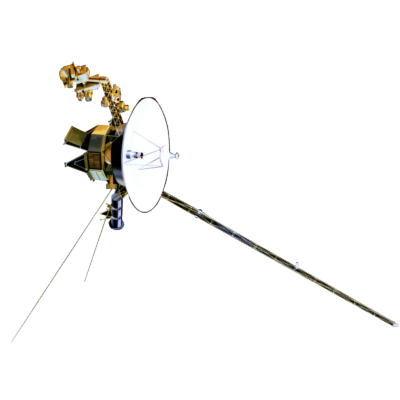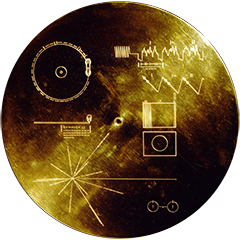Voyager LECP Data Analysis Handbook
Calibrations and Channel Definitions
Specification
LECP Pulse Height Analyzer
Document Source: D. P. Peletier, LECP-013-74, Rev. A, June 20, 1974
Circuit Function
The LECP analyzes the outputs of five solid state detectors to determine what elementary particle or ion has entered the experiment. Part of this determination is made in the LECP Pulse Height Analyzer, which detects the peak pulse amplitude, and holds this voltage long enough to perform an A/D conversion and output the digital data to the LECP data assembly.
Not all detector pulses are of equal interest. Consequently a priority scheme in the LECP data assembly selects the desired pulses and sends an "analyze" signal to the pulse height analyzer.
Only four of the five detector output pulses are measured for any given particle event. Detectors D2, D3, and D4 are analyzed for each event. In addition a single digital bit from the data assembly indicates whether D1 or D5 is analyzed during a particular event.
At the maximum data rate one event is analyzed every 250 ms. The system dead time, however, should not exceed 1.5 ms. In addition, if a higher priority event occurs it is analyzed and the higher priority data replaces the lower priority data. Since there are three priority levels a maximum of three conversions may be required per each 250 ms data-taking period.
Circuit Characteristics and Timing
Figure 1 is a block diagram of the LECP pulse height analyzer and figure 2 shows the signal timing relationships. The duplication of some circuits reflects the project commitment to using redundancy in those areas in which a single failure will cause a loss of many vital data sources. The policy is in keeping with the 10 year mission lifetime goal. Of course power is a premium quantity and power switching is required on redundant circuits to reduce unnecessary dissipation.
Box Cars
The peak amplitude of the pulses from the detectors is the quantity containing the desired particle energy information. The "box cars" shown in figure 1 preserve this information for 9 microseconds (see figure 2) while the priority logic decides whether or not to analyze the pulse height. After 9 ms the box car resets to zero and awaits the next pulse, which may come as soon as 1 ms after the box car resets.
Since the box car is a rectifying-type device, it may be possible to use it as a noise monitor with little addition of components. Although this is not a primary objective of the pulse height analyzer, incorporation of a noise monitor in the box car circuit would eliminate the need for separate circuits to do this job. This is therefore a desirable approach.
Sample and Hold
When the priority logic decides that an event should be analyzed, the box car output is sampled and held for the time required to make an A/D conversion on the four amplifier outputs. Since the total conversion time per event is about 318 ms the sample and hold circuit must hold for about 1.5 ms.
Linear Gates and Sequencer
The sequencer selects the sample and hold voltage to be analyzed and activates the appropriate linear gate. The sequencer timing is shown in figure 3.
Power Switching
The requirement for redundancy mentioned earlier adds complication to the experiment. To reduce this impact it is desired to combine the redundancy implementation with a power switching circuit which reduces the average power dissipation of both sets of redundant circuits to essentially zero.
This is possible because the duty cycle of the pulse height analyzer is very low (approx. 100:1). There will be two "analyze" signals used as "power-up" commands for each of the two sets of redundant circuits.
Interfaces
+5 Volts, ±6 Volts and +12 Volts are presently available for experiment power. Special voltages can be made available if necessary.
To insure clean interfaces in the power-switched circuits, open collector circuits are used with the pull-up resistors mounted on the receiving end. Figure 4 shows the recommended interface circuits for CMOS.
Schedule
A flight parts order will be placed on July 1, 1974. It is desired that long lead items be defined by then. Furthermore, an order will be placed for parts which are expected to be used in large quantity.
Parts
The selection priority for parts in general are found in the Quality Assurance Plan for LECP. The tables below show the preferred resistor value guide. (A) Preferred LECP resistor values - to be used whenever possible; (B) Available RNR55 values - to be used only when necessary.
A. Preferred Values - Thin Film (Thick Film)
| *1.00 (1.0) | *1.78 (1.8) | *3.16 (3.3) | *5.62 (5.6) |
| 1.10 (1.1) | 1.96 (2.0) | 3.48 (3.6) | 6.19 (6.2) |
| *1.21 (1.2) | *2.15 (2.2) | *3.83 (3.9) | *6.81 (6.8) |
| 1.33 (1.3) | 2.37(2.4) | 4.22 (4.3) | 7.50 (7.5) |
| *1.47 (1.5) | *2.61 (2.7) | *4.64 (4.7) | *8.25 (8.2) |
| 1.62 (1.6) | 2.87 (3.0) | 5.11 (5.1) | 9.09 (9.1) |
*These are stocked and should be used as the Primary Values.
B. These are the RNR55 standard values. Those not listed above should only be used when absolutely necessary.
| 1.00 | 1.33 | 1.78 | 2.37 | 3.16 | 4.22 | 5.62 | 7.50 |
| 1.02 | 1.37 | 1.82 | 2.43 | 3.24 | 4.32 | 5.76 | 7.68 |
| 1.05 | 1.40 | 1.87 | 2.49 | 3.32 | 4.42 | 5.90 | 7.87 |
| 1.07 | 1.43 | 1.91 | 2.55 | 3.40 | 4.53 | 6.04 | 8.06 |
| 1.10 | 1.47 | 1.96 | 2.61 | 3.48 | 4.64 | 6.19 | 8.25 |
| 1.13 | 1.50 | 2.00 | 2.67 | 3.57 | 4.75 | 6.34 | 8.45 |
| 1.15 | 1.54 | 2.05 | 2.74 | 3.65 | 4.87 | 6.49 | 8.66 |
| 1.18 | 1.58 | 2.10 | 2.80 | 3.74 | 4.99 | 6.65 | 8.87 |
| 1.21 | 1.62 | 2.15 | 2.87 | 3.83 | 5.11 | 6.81 | 9.09 |
| 1.24 | 1.65 | 2.21 | 2.94 | 3.92 | 5.23 | 6.98 | 9.31 |
| 1.27 | 1.69 | 2.26 | 3.01 | 4.02 | 5.36 | 7.15 | 9.53 |
| 1.30 | 1.74 | 2.32 | 3.09 | 4.12 | 5.49 | 7.32 | 9.76 |
The table below shows the preferred capacitor value guide.
LECP Preferred Capacitor Values
| 1.0 pf | 10 pf | 100 pf | 1,000 pf | .010 mf | .10 mf | 1.0 mf |
| 15 pf | 150 pf | 1,500 pf | .015 mf | |||
| 2.2 pf | 22 pf | 220 pf | 2,200 pf | .022 mf | .22 mf | 2.2 mf |
| 33 pf | 330 pf | 3,300 pf | .033 mf | |||
| 4.7 pf | 47 pf | 470 pf | 4,700 pf | .047 mf | .47 mf | 4.7 mf |
Return to Calibrations main page.
Return to Voyager
LECP Data Analysis Handbook Table of Contents.
Return to Fundamental
Technologies Home Page.
Updated 8/9/19, Cameron Crane
VOYAGER 1 ELAPSED TIME
*Since official launch
September 5, 1977, 12:56:00:00 UTC
VOYAGER 2 ELAPSED TIME
*Since official launch
August 20, 1977, 14:29:00:00 UTC
QUICK FACTS
Mission Duration: 40+ years have elapsed for both Voyager 1 and Voyager 2 (both are ongoing).
Destination: Their original destinations were Saturn and Jupiter. Their current destination is interstellar space.



